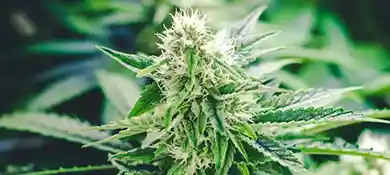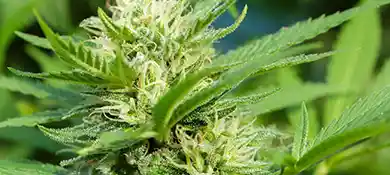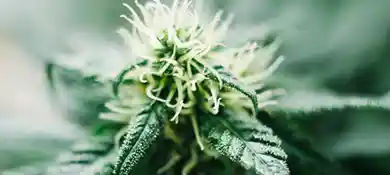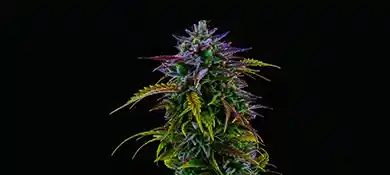Does Humidity Rise or Fall in a Room? 5 Insights on Cannabis Growth
It's important to maintain optimal humidity as a grower. Are you aware of rising or falling humidity in this environment? Understanding this will enable you to create a favorable plant environment.
The Role of Humidity in Plant Growth
Air humidity can be defined as the amount of water vapor present in the air. It impacts plant growth and development by facilitating water and nutrient absorption from the soil. As a result, it is essential for maintaining the health and wellbeing of plants.
Air humidity affects the rate at which plants lose water through transpiration. As a result of dry air or low humidity, plants lose water more rapidly, resulting in wilt and other problems.In contrast, too humid air can cause waterlogging and root rot, because the leaves cannot release moisture into the air. Hence, optimal humidity levels are essential for plant growth.
As well as air humidity, soil moisture also plays an important role in the growth of plants. Moisture in soil is the amount of water plants can absorb. It affects plants' ability to absorb nutrients and minerals. Neither too much nor too little water can cause waterlogging or dry ground that makes it hard for plants to grow.
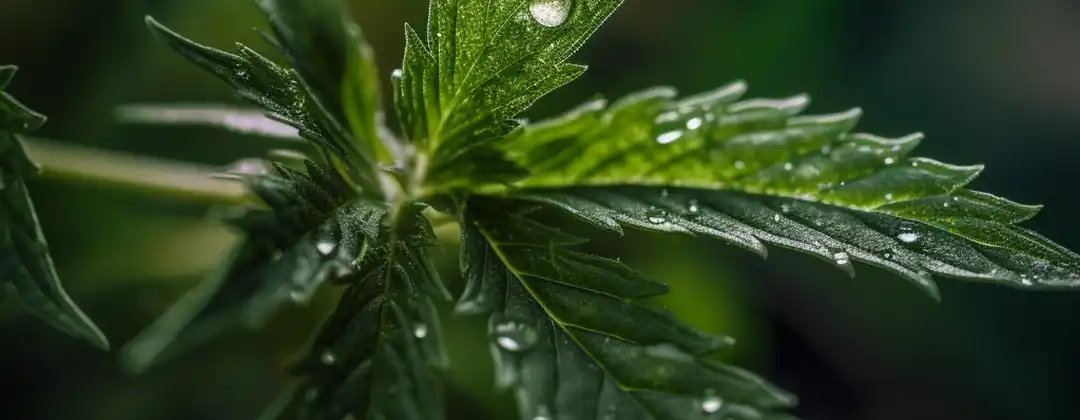
Influence of Humidity on Grow Room Temperature
Temperature and humidity are complex relationships, and understanding their effects is crucial. In humid conditions, the air feels warmer. It's because high humidity reduces the evaporation rate, which cools us by evaporating sweat from our skin.This is why we feel hotter in humid air than in low humidity air at the same temperature. Low humidity, however, can make it feel cooler. We feel cooler in dry air because moisture evaporates faster from our skin. Humidity can also affect temperature in a growing space. Plants can wilt and drop leaves if the humidity is high.
Mold and fungus can grow in high humidity, which can damage or kill plants. Low humidity, on the other hand, slows down plant growth. As a result, low humidity makes soil dry quickly, making it difficult for plants to absorb nutrients. In order for your growing space to remain stable and conducive to plant growth, keep the humidity at an optimal level. The humidity level can be controlled with humidifiers and dehumidifiers.
For high-end commercial cannabis projects, the latest technology grow room HVAC system is the ideal solution. When temperature and humidity are balanced correctly, plants thrive and produce the highest yield.
Optimal Cannabis Conditions
Plant growth stage determines humidity levels in a grow room. As a plant matures, its roots develop, improving its ability to absorb water and nutrients. It affects transpiration rate, which in turn affects humidity and temperature levels required for optimal growth. Therefore, humidity levels may rise or fall depending on plant development.
An ideal humidity level depends on the plant species being produced and the grower's preferences. Some growers may experiment with different levels of temperature and humidity to achieve desired results. When using LEDs as opposed to HIDs, growers may choose to increase air temperatures slightly because LEDs use lower wattage. Aside from LED intensity, the manufacturer's recommendations also matter. Creating a thriving environment is the goal.
Seedling Stage
In a grow room, the recommended humidity level is between 65-70%. Whether the humidity in the grow room increases or decreases depends on several factors, such as temperature, ventilation, and water supply. Proper ventilation and air circulation help regulate humidity levels and prevent excess moisture buildup.
Creating a high-humidity environment in your nursery or cloning room is recommended to give your plants the best chance of establishing a root system. This will help reduce leaf transpiration and relieve stress on immature roots, allowing them to catch up before increasing VPD and transpiration.
Growing clones and seedlings can use plastic humidity covers to retain moisture and heat. However, it is essential to ensure proper ventilation to prevent excessive moisture buildup and to allow CO2 exchange.
Vegetative Stage
As the plants enter flowering, it is recommended to gradually reduce the humidity in 5% increments at regular intervals until it reaches a level suitable for transplanting and flowering. However, it is essential to note that the humidity should not drop below 40%. to prevent plant damage.
As the plants enter the vegetative stage, the humidity level should decrease. This allows the plant to complete its root system development and leafy growth before flowering. The humidity level should decrease over time. The humidity should between 40% and 70% in the vegetative stage, and gradually decrease in the flowering stage.
Flowering Stage and Late Flowering Stage
The recommended humidity level is between 40% and 50% during flowering. To prevent mold growth. Reducing humidity levels helps with this, but keeping temperatures cool is essential to maintain ideal vapor pressure differentials (VPD). Avoiding heat above 84°F is recommended, especially during the second half of the flowering period, as it can stress the plants and reduce yields. High temperatures with low humidity can also dry out plants quickly, which is undesirable.
Drying and Curing Stage
When drying and curing cannabis buds, it is essential to maintain proper humidity and temperature levels. Drying buds should be maintained between 45% and 60% humidity to prevent premature drying and preserve quality and taste. Low humidity levels can damage plants, so monitor humidity levels throughout the drying process. Temperature control is also essential during drying. If temperatures rise above 80°F, terpenes are destroyed and buds are rapidly dried.
Therefore, we must avoid excessive temperatures. Watch out for mold during the drying process as well as humidity and temperature levels. High humidity can lead to mold growing on buds and affecting their quality. So make sure there's no excessive moisture to prevent mold growth. Keeping cannabis buds in a dark room with moderate indirect airflow is ideal for drying.
This environment will ensure the buds dry slowly and evenly, thus preserving their quality and taste. In summary, maintaining the proper humidity and temperature levels during the drying and curing process is critical to maintaining the quality and flavor of your cannabis buds.
How to Control Humidity in a Cannabis Grow Room
Humidity in a grow room can rise quickly and cause problems for plants. Humidity control is crucial to nutrient uptake and transpiration, ultimately reducing yields and causing mold, mildew, and other fungi damage to crops. The high humidity also makes plants more susceptible to disease and pests.
Controlling humidity day and night is important. At night, humidity rises quickly, and the air conditioner doesn't work as well.As temperatures drop, humidity rises, stressing plants and making them more susceptible to disease. To prevent this, you can use the grow room hvac system to control the humidity at different temperatures. No matter what you do, you've got to keep a consistent humidity level.
Hygrometers are the most commonly used tools to measure humidity in grow rooms, measuring the amount of moisture in the air. It is also recommended to use regulation systems that can communicate with each other and adjust as needed. Despite being more complex, these climate solutions can provide your plant with a more cohesive climate solution.
Several factors can affect humidity in a grow room, including temperature, ventilation, and water use. Controlling humidity levels requires easy-to-use equipment. Systems that support ModBus allow centralized control through software. For example, Altaqua's grow room hvac system allows growers to monitor and adjust temperature, humidity, CO2, and ventilation to ensure optimal plant growth. Get in touch with us if you are interested in a recommendation.
Avoiding Mistakes in Humidity Management
When managing humidity in a grow room, there are some common mistakes to avoid.
First, it is imperative to ensure that the grow room is sealed correctly to avoid air leaks and fluctuations in humidity levels. If not sealed properly, air leaks can lead to varying humidity levels affecting plant growth and health. The grow chamber can be filled with a sealant or sealing tape to avoid this.
Relying too much on a humidifier is another mistake. It's great to have a humidifier, but you have to use it right. No humidifier is needed if the humidity level is high enough. You need to regularly check the humidifier to avoid over-humidify.
Furthermore, avoid overcrowding your plants, which will lead to stagnant air and poor air circulation. Too dense plants shade each other and block airflow. A proper spacing can be provided in the grow room to prevent this.
You can avoid these common mistakes by monitoring humidity levels, ventilation, and air circulation regularly. Invest in a hygrometer and thermometer to monitor humidity and temperature. Plants yield and quality are improved when moisture and temperature are maintained correctly.
FAQ about Does Humidity Rise or Fall in a Room
1.Is humidity higher near the floor or ceiling?
Humidity tends to be higher near the floor due to cooler temperatures and condensation.
2.Is humidity higher upstairs or downstairs?
Humidity can be higher downstairs as warm, moist air tends to rise and then cool and condense in cooler areas.
3.How does humidity disperse in a room?
Humidity disperses in a room through air movement. It can vary due to temperature differences, airflow, and the presence of water sources.
Share with your friends:
Popular Blogs on Altaqua:
Download Catalogue
